HMNZS Te Kaha, an Anzac class frigate, has arrived in Esquimalt, British Columbia, to commence a major upgrade of its sensor and weapons systems expected to extend its service life out to 2030.
Marking the arrival of the vessel in Canada, New Zealand’s Defence Minister Ron Mark said that “there is a significant programme of work to upgrade or replace New Zealand’s defence equipment that aims to maintain the safety of our military personnel and the country’s ability and readiness to deploy when needed, both in this country and overseas”.
This latest refit will follow on from earlier upgrades that worked on the vessel’s propulsion, air-conditioning and CIWS systems by upgrading the surveillance, combat and self-defence capabilities. The project will be undertaken by Lockheed Martin Canada, who won the international tender using an adapted version of the recent upgrades conducted on the Canadian Halifax class frigates.
This will include the installation of their CMS 330 Combat Management System and the replacement of the RIM7P Seasparrow missile with MBDA’s British designed Sea Ceptor vertical launched CAAM(M).
Some cost overruns have already occurred however and the government was forced to reallocate an additional NZ$148 million (£77 million) from the Littoral Operations Support Capability project to ensure the refit could go ahead. The total project budget it therefore expected to be $639 million (£336 million).
Discussing the funding shift the Minister said that “the Government’s decision reflects the value placed on our frigates and their ability to operate across and support a wide range of operations.”
“In the time the frigates have been operational New Zealanders have come to expect their involvement in constabulary and humanitarian, to combat roles as part of a multinational coalition. These contributions are valued by our international partners.”
The refit has also demonstrated the strong bond between the two Commonwealth Realms. “New Zealand and Canada have a close and enduring partnership based on shared history and common interests. Our cooperation on the Frigate System Upgrade is a demonstration of the maturity of our bilateral relationship, which continues to strengthen in 2018,” Mr Mark said.
This was further shown in the transit to Canada when ten members of the Royal Canadian Naval Reserve were embarked in Pearl Harbor to join the vessel on the final leg, gaining experience on working life aboard the frigate and working with their New Zealander counterparts.
Once HMNZS Te Kaha’s upgrade is completed later this year she will relieve her sister ship HMNZS Te Mana as the Navy’s active frigate allowing the Te Mana to undergo the same refit in early 2019.



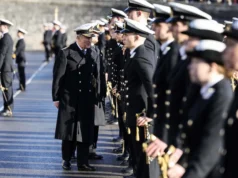
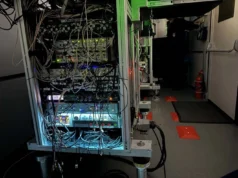
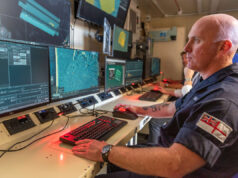
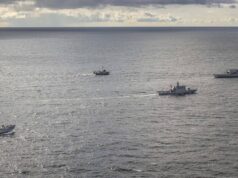


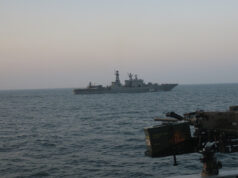
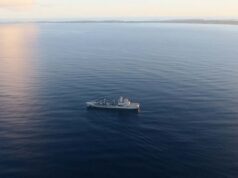
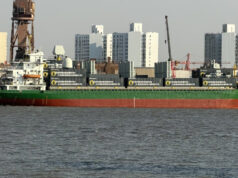
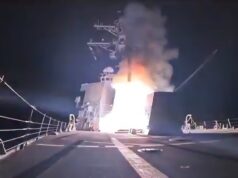

Refit one frigate so it can last a decade longer and it costs £336 million. Is it just me or does that figure sound a little high?
To be fair, I believe there was an unforseen increase in the project of $148m for a total cost of $320 per ship.
A more important issue is the sustainability of operating with this missile system in the Pacific/Asia.
The cost is for two ships.
$440M (NZ Dollar) or £230M was the approx. figure in Feb 2016, this has increased by $148M (£77.5M).
Total cost per ship is approx. £170M
The NZ MOD has stated that the upgrade will increase the life of the vessels to 2030, but the reality of limited funds means they will be in service until 2040.
Sustaining the new equipment any on the planet is not an issue.
[…] post Kiwi frigate arrives in Canada for major refit, slated to receive British designed Sea Ceptor missil… appeared first on UK Defence […]
Depends what the material condition was beforehand, and how much spares and servicing are built into the deal going forward. Bottom line is: readiness costs.
Quite a big potential Meko 200 market for AAM upgrade to Sea Ceptor
I understand the Kiwis will be without an operational frigate for a year.
‘Kiwi Frigate’ – Love it.
I wonder why the UK decided not to be part of the ER version research. The standard version is pretty decent but the extra range would make it that little bit more effective as a area defence escort and not just point defence.
Imsuspect the UK is committed to project implementation timelines for Type 23 upgrades, Type 26 and the army version of FLAADS and don’t want any research delays. In any event judging by the comments in this article the basic missile seems to provide area defence not just point defence. Published missile ranges are usually comservative for obvious reasons.
https://ukdefencejournal.org.uk/sea-ceptor-missile-test-firing-trials-conclude-successfully/
Is there any intention from New Zealand to replace these Frigates with the successful design that the Australian navy will choose for its future Frigate in the same way that the ANZAC’s were procured ?.
Here’s a thought. Why don’t we increase the number of T31s to be built and lease them to NZ and other countries as part of a goodwill gesture?
I’m certain their Meko200s (Anzac) frigates are more of a general purpose rather than a dedicated ASW ship. I think it would make sense for Nations with limited defence budgets, to lease hire rather than buy as part of a Government to Government deal. They can ensure that not only do they have a modern warship but it comes with all the bells and whistles of a lease hire, i.e. upgrades, maintenance etc.
The T31 could be a winner for this country if it correctly fitted out with a decent weapon suite.
I think you are onto something; a lease purchase agreement similar to the way most people buy a car: initial deposit, manufacturers deposit contribution, monthy payments, servicing included, final payment option or buy the next model. Works for Type 31, and also works planes. Give Typhoon tranche 1 to Poland for a monthlylease that coverse servicing and training package. 5 year deal with final paymenf oprion or chop rhem in for Tranxhe 2 or 3…
I agree – it could work out well for us
The car analogy is pretty good I think. Customize your car becomes customize your Type 31e. And the end of lease conversation is about using the residual value of your current ‘transport’ as the deposit for a trade up. Plus ‘free’ servicing and 5 year warrantee etc locks the customer into your kit. Really formalising the relationships we have had with countries like Chile and Brazil.
Pretty sure that is how the french deals with egypt and morocco worked out for fremm etc
Exactly, the French have been doing similar for ages. Seiling frigates to countries who patently jave no money. And rigging contracts to fudge sales prices versus after sales support. There is no way they should have won the Indian Rafale deal. Time we wised up.
Yeah look at the Bay class we gave to Australia. That was a great success wasn’t it ? Have they stopped laughing yet ?